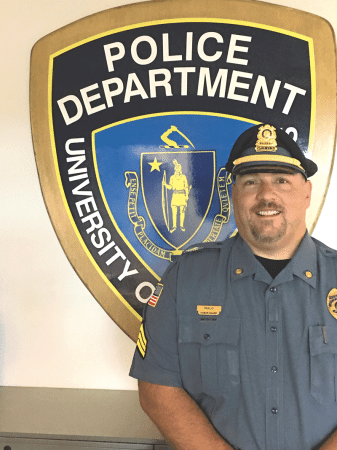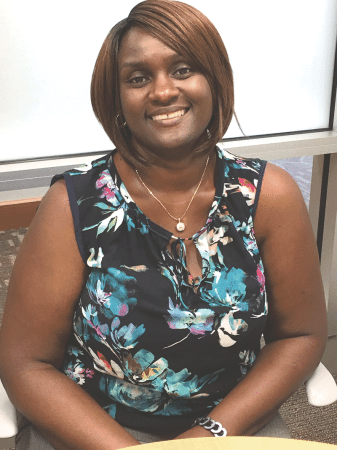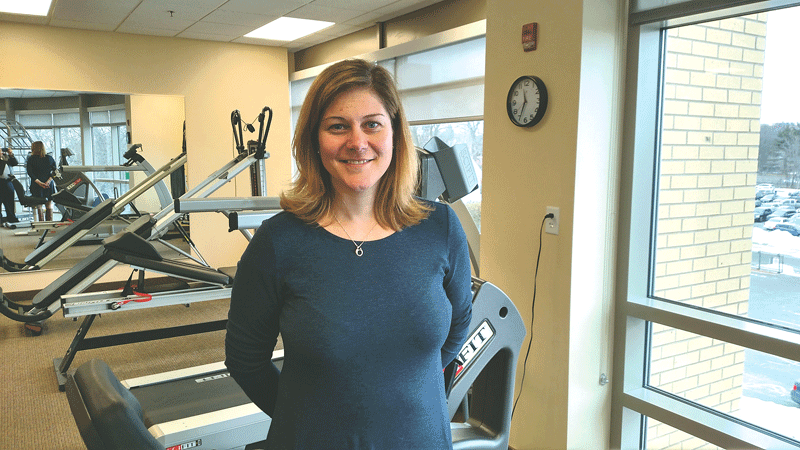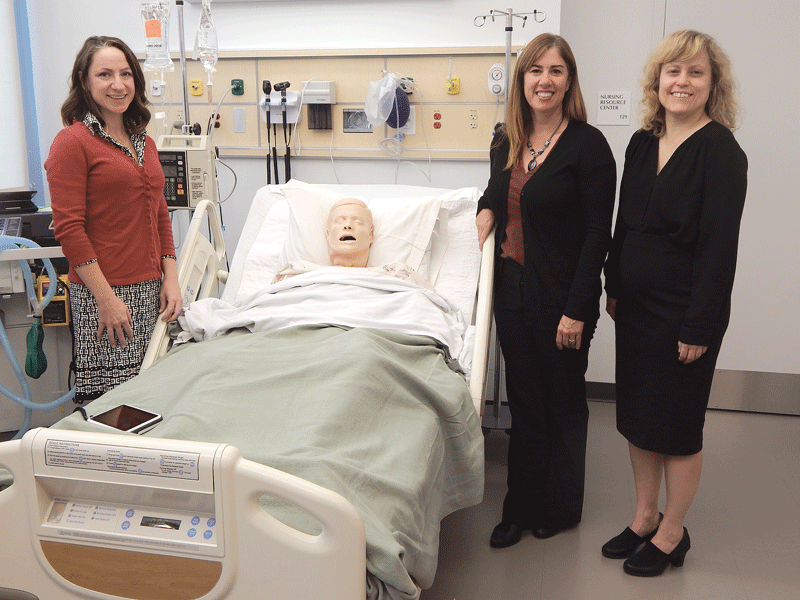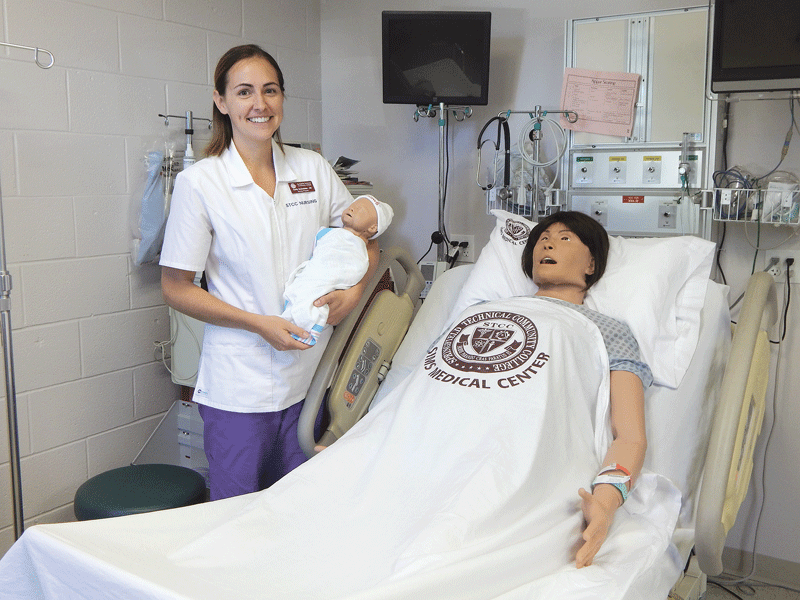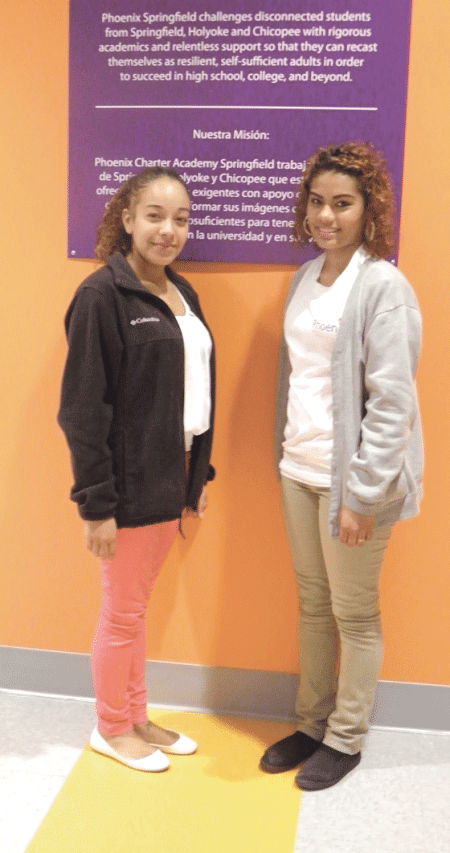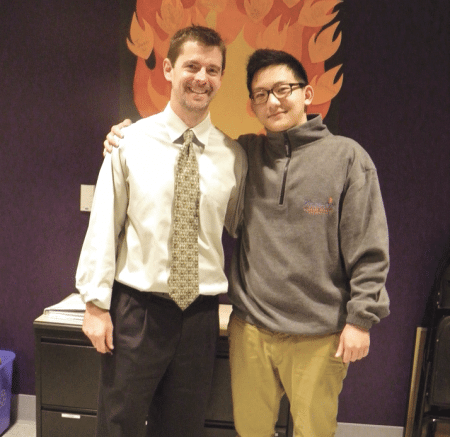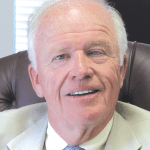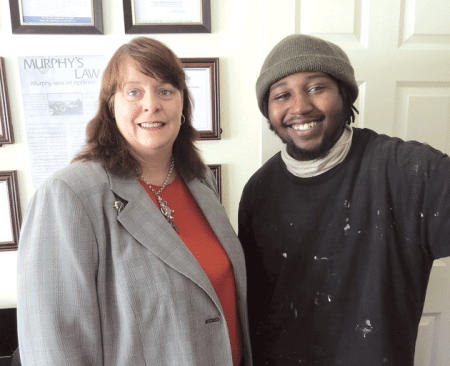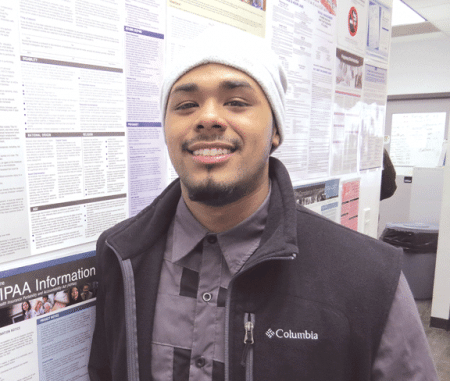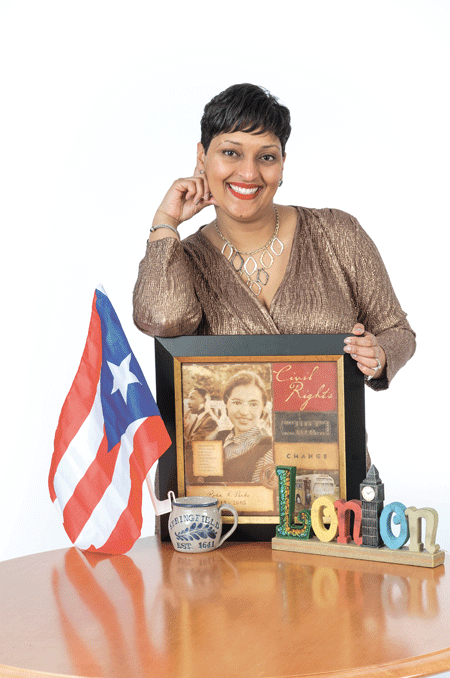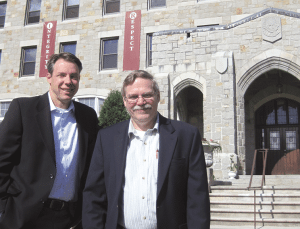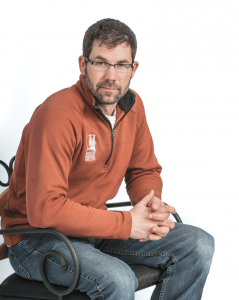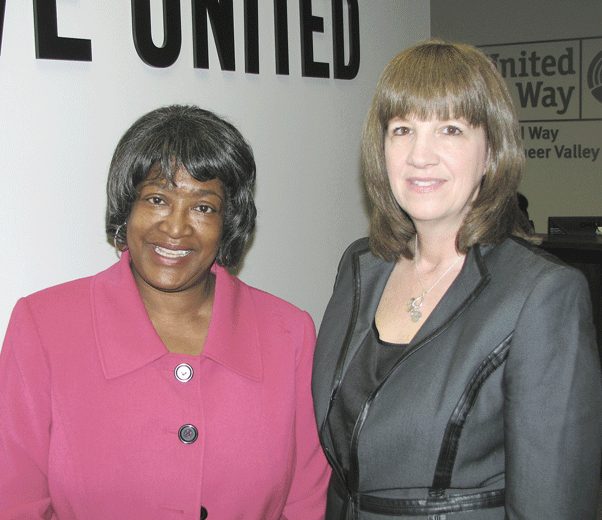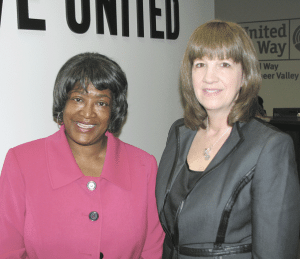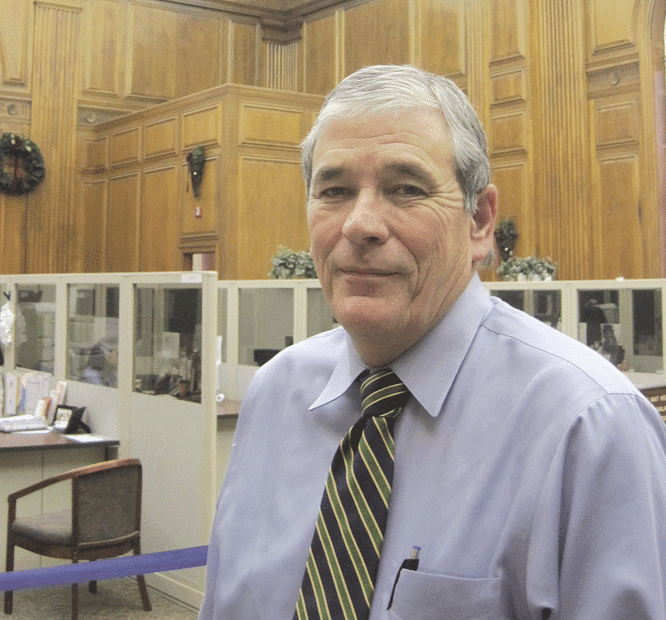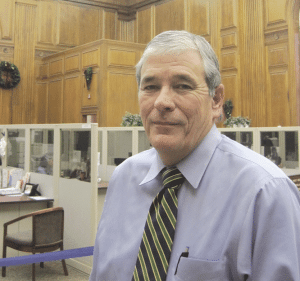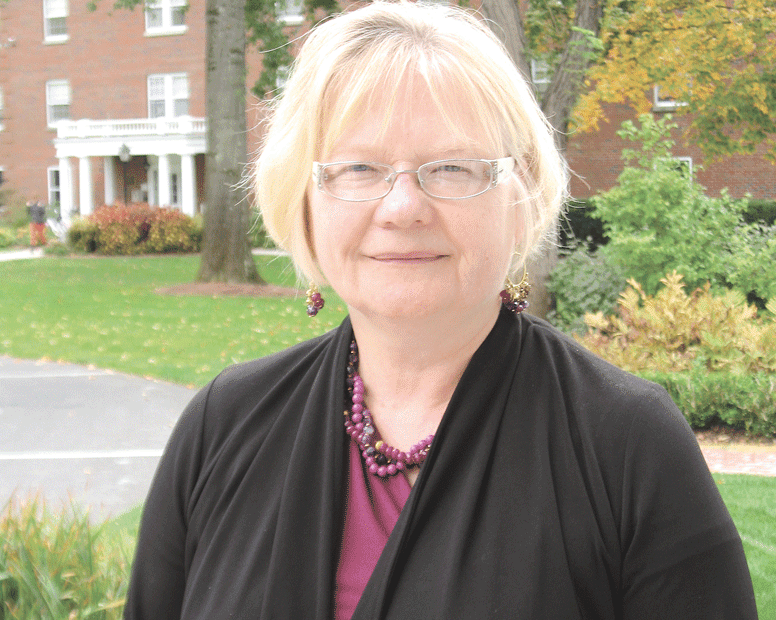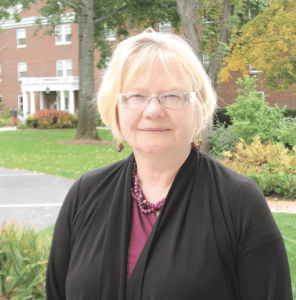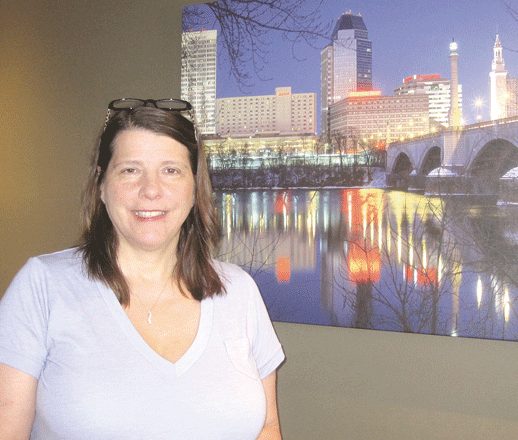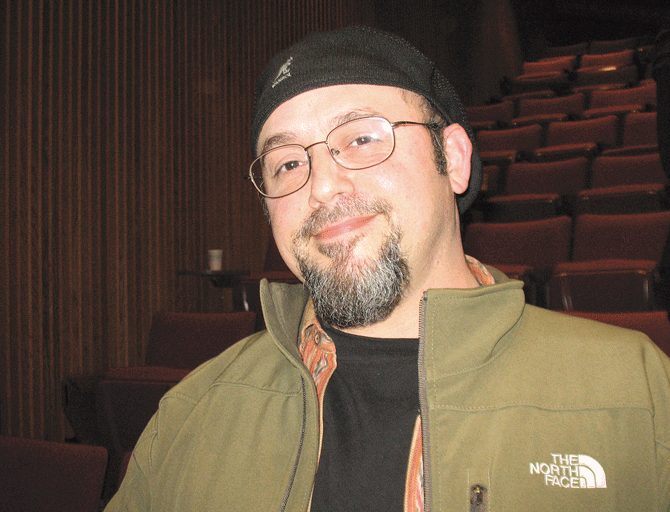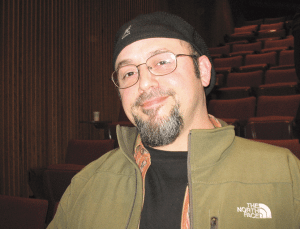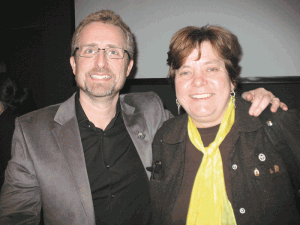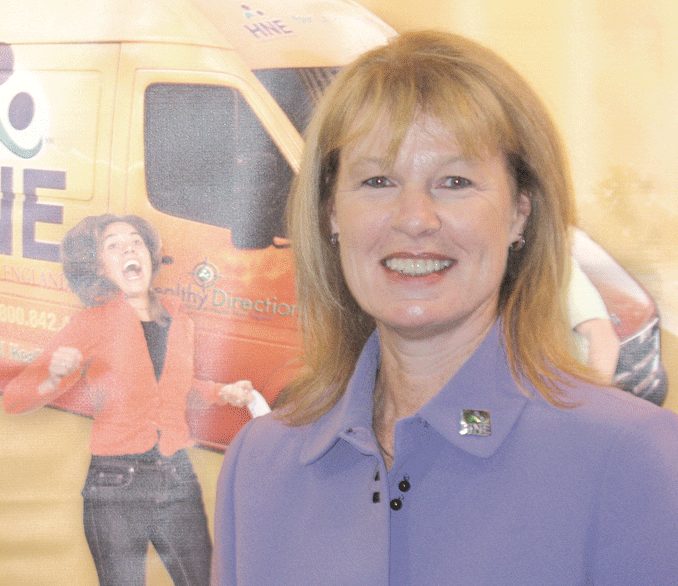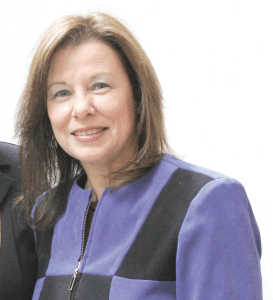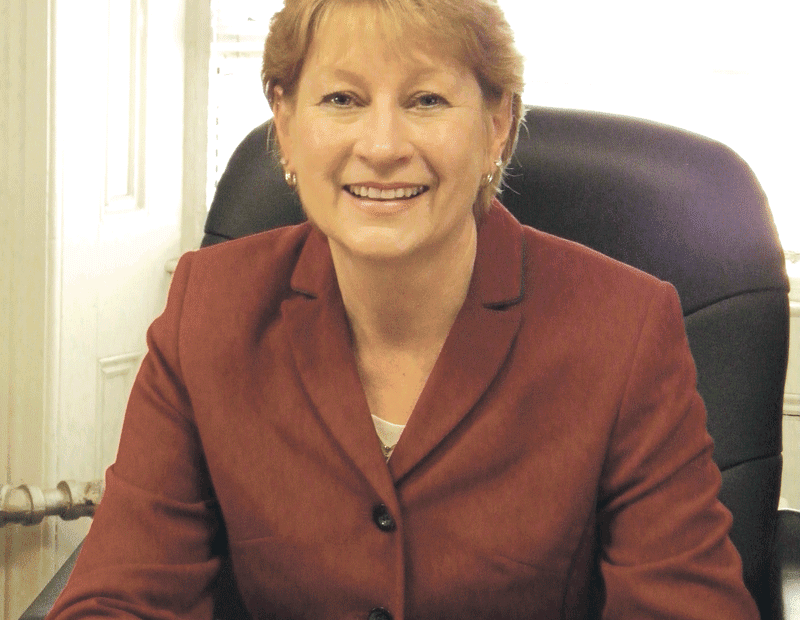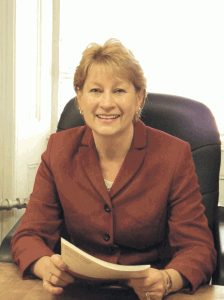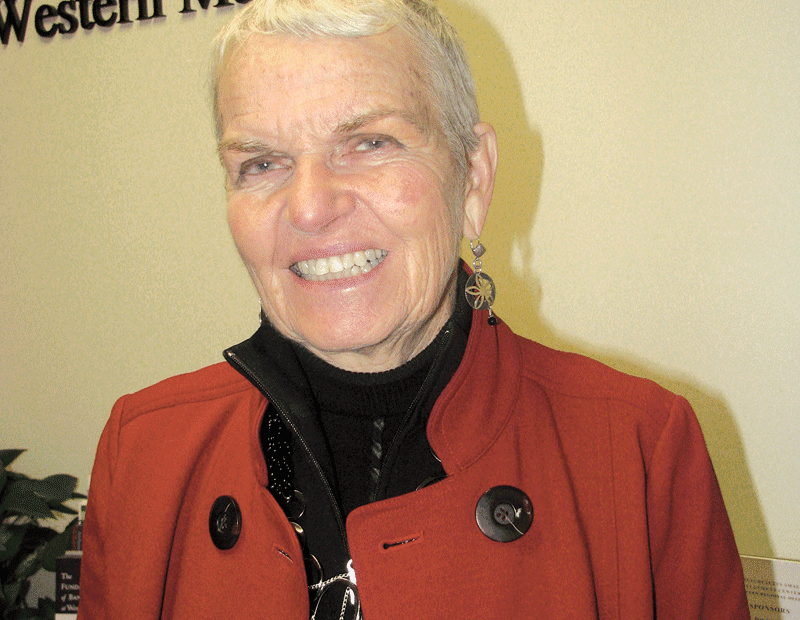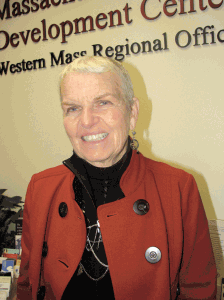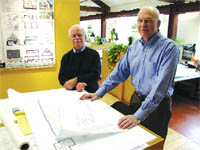Area Farmers Benefit from a Changing Landscape

Ryan Voiland, owner and manager of Red Fire Farm, awaits customers at the weekly farmers market at Springfield’s Forest Park.
Joe Shoenfeld calls it “an attitudinal shift.”
That’s how he chose to describe a movement, for lack of a better term, that has made terms like ‘fresh,’ ‘healthy,’ ‘organic,’ ‘sustainable,’ and especially ‘local’ not just adjectives that dominate the lexicon — and also the marketing materials — of those who grow, sell, and prepare food, but also part of this region’s culture.
“I think we’ve definitely moved beyond something that could be called a fad or a trend regarding local purchasing and local food,” Shoenfeld, associate director for the Center for Agriculture, Food and the Environment in the College of Natural Sciences at UMass Amherst, told BusinessWest. “Cynics may think it will fall away, and maybe interest will decline from where it is now. But what we’re seeing is a real shift, especially in Western Mass. There’s been a shift in attitudes about the local economy and about food, especially among the younger generations.”
And this shift is having a rather profound impact on the region’s agricultural sector, one that has manifested itself in countless ways. These include the rapidly growing number of farmers markets in area parks, downtowns, bank parking lots, and on the grounds of major employers like MassMutual and Baystate Medical Center; the buying habits of UMass Dining, the largest operation of its kind in the country, serving more than 45,000 meals a day; the ranks of restaurants loudly boasting a farm-to-table operating philosophy; the number of students in the Sustainable Food and Farming program at UMass (there were five in 2003 and 150 this past spring); and the number of acres Ryan Voiland is devoting to kale, that leafy green vegetable that has seen its popularity skyrocket in recent years.
“Kale has really taken off — as have many other things,” said Voiland, 37, owner and manager of Red Fire Farms, operating in Granby and Montague, and one of a sharply rising number of people who are considered new to the profession — and finding opportunity in that aforementioned attitudinal shift.

Joe Shoenfeld, right, and John Gerber both say that students at UMass Amherst reflect what they call an attitudinal shift toward buying local and eating healthier food.
Voiland, who said it would take less time to list what he doesn’t grow, now sells at many of those farmers markets, offers CSA (community-supported agriculture) shares, supplies several area restaurants and co-ops with fresh produce, and recently inked a roughly half-million-dollar contract with the Wegmans supermarket chain, which is expanding its reach in the Bay State.
“They approached us because they heard we had pretty good stuff, it’s certified organic, and in Massachusetts,” Voiland explained, adding that the first deliveries will begin in a few weeks. “They really wanted to link up with a farm that could provide enough volume to supply their Massachusetts stores, and they also want to promote that they’re making organic local produce available in their stores.”
Such motivations help explain why sales at nearly all of the farm’s various outlets have grown, and also why the Red Fire story is typical of what’s happening locally, both with relative newcomers like Voiland and individuals whose families have been working the land for generations.
This shift didn’t come about quickly or easily, and in many ways it is still evolving, said Phil Korman, executive director of Communities Involved in Sustainable Agriculture (CISA), which advocates for area farmers, engages the community to build the local food economy, and has launched, among other initiatives, the ‘Be a Local Hero’ program that now boasts more than 400 members, meaning those who grow products locally and those who buy them.
The new attitude came about through hard work on the part of CISA, other industry groups, and individual farmers themselves to generate far greater appreciation for the foods being grown and those tilling the soil, he explained.
“Part of what the problem has always been is that there’s been a lack of respect for the people who are growing our food and other farm products,” he said, adding that this is another attitude that is changing. “We’ve created an environment in this region where people love their farmers and they want to buy from their neighbors who are farmers.”
For this issue, BusinessWest takes an in-depth look at how the landscape is changing, figuratively and quite literally, for area farmers, and why many believe, as Shoenfeld does, that this is not a trend or a fad, but a change with staying power and vast potential for growth of a proud industry.
Root Causes
Gideon Porth says farmers in Western Mass. probably have a different working definition of ‘drought’ than their counterparts in many other regions — especially those toiling in California, for example, which is experiencing a dry spell of epic proportions.
“In New England, we go two weeks without a drop of rain, and we start screaming ‘drought,’” Porth, owner of Atlas Farms in Deerfield and another newcomer to this profession, explained in a voice that blended sarcasm with a large dose of seriousness. “But we’re at about the one-month mark now, which is totally unheard of in April and May; we never seen that long a dry stretch, and the farm’s about as dry now as I’ve ever seen it.”
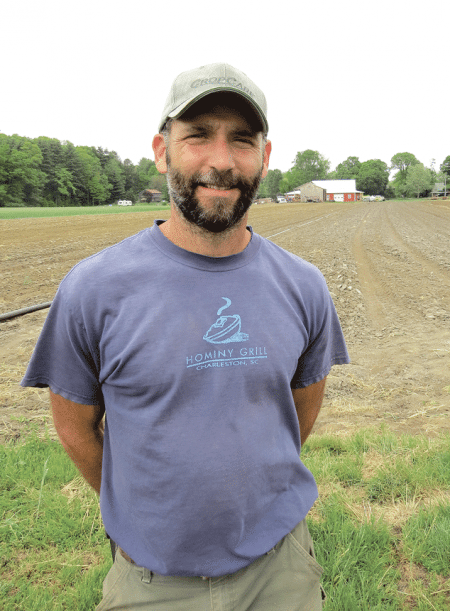
Gideon Porth, owner of Atlas Farm in Deerfield, is one of many individuals who would be considered new to the profession.
And on the day he talked with BusinessWest, there was no end to this dry patch in sight. Indeed, the showers that visited early that morning did little more than make the dust more settled, he said with a laugh.
But while area farmers are looking at the blue skies with some apprehension (things were still quite dry at press time), there are fewer storm clouds in a figurative sense as well, and that development bodes well for a sector that was in sharp decline and defined by serious questions only 20 years ago.
Indeed, CISA was created out of concern for the future of this sector and a desire to advocate for it, said Korman.
“CISA started amid conversations among farmers and farm advocates who, in the mid-’90s, were concerned about the challenges to agriculture in Western Massachusetts,” he explained. “And some of those challenges still exist today — the challenge of accessible farmland, the loss of farmland to development, competing in a global economy, and public policy favoring very large industrial farms.”
Out of those conversations, a grant was obtained from the Kellogg Foundation to basically use marketing for social issues, he went on, adding that CISA began to promote local farms to their neighbors. And two decades later, it’s clear that these efforts have been quite successful.
Indeed, the 2015 edition of CISA’s Locally Grown, a farm-products guide covering the Pioneer Valley, now boasts more than 400 busineses, including more than 250 farms that grow products and a host of restaurants, co-ops, supermarkets, colleges, hospitals, retirement homes, and other businesses that sell or buy them.
“Every single year, that number goes up,” said Korman, adding that there are now more than 60,000 copies of the guide published, putting information in the hands of those who want to buy local and buy healthier foods — a rapidly growing constituency.
How this attitudinal shift described by Shoenfeld, Korman, and others came about is largely a function of changing priorities and growing concerns about health and the environment. And while this movement is cross-generational, in many respects, it is younger people who are leading this charge and who also have the power — and the inclination — to ensure that this isn’t a fad.
“This change has been evolving for a long time,” said Shoenfeld. “And I think it goes all the way back to basic understandings about ecology that started with Silent Spring [the Rachel Carson book credited by many with igniting the environmental movement in the ’60s], and moved on from there to climate change and personal human health and the unexplainable new health problems that our culture seems to be coping with.
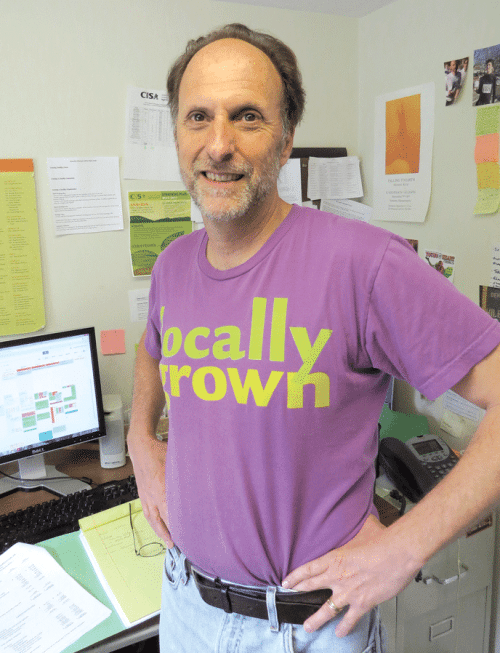
Phil Korman says one of CISA’s goals is to expand economic opportunities for farmers, which it does through initiatives ranging from its ‘Local Heroes’ program to winter farmers markets.
“People are concerned and want to see what they can do themselves to control those aspects of their life that they can,” he went on. “And one of the aspects of your life that you can have a little more control over is what you eat and where it comes from. Perhaps not total control, at least at this point, but more. I think that’s where this is coming from.”
John Gerber, a professor of Sustainable Food & Farming at UMass Amherst, agreed, and referenced students at the university as examples of those espousing what might be considered new thinking.
“There’s both fear and opportunity,” he said with regard to current events and daily headlines. “Every time you open the newspaper, you see an egg recall or a cantaloupe recall, or a processed-food recall, and that leads to question marks. And then, these students see opportunity; they go to the dining commons and see that their potatoes are coming from a farm almost within eyesight of that dining commons.
“And there’s a connection there — a meaningful connection to something that’s real,” he went on. “The processed foods — things that come in a can or a box — don’t feel real, and a lot of people, especially young people, are searching for meaning in their lives. And food is something you can actually do something about.”
But there is much more to the buy-local and eat-healthier movements than college students looking for meaning, said those we spoke with, adding that society in general is trying to get healthier and paying more attention to the notion of supporting the local economy.
The trend, or shift, hasn’t caught on everywhere, said Gerber, but there are some hot spots, and the Bay State — especially Western Mass. — is certainly one of them. (Washington and Oregon would constitute another, while Southern California would be a third.)
“From a production perspective, we’re seeing a lot of young farmers getting involved in what they consider to be a meaningful life, producing something real — food for a population that seems to demand it,” he explained. “There are many places in this country where this is not on the radar, but we’re seeing it grow.”
Experts in Their Field
Since arriving at UMass Dining more than a decade ago, Ken Toong, who now leads Auxiliary Enterprises at the university, has implemented a number of initiatives that have made that operation one of the nation’s leaders, a program that schools across the country are trying to emulate.
Steps have ranged from spending tens of millions of dollars to modernize and upgrade the dining commons, to the introduction of sushi as a staple on the menu (the school now serves roughly 3,000 pieces a day); from the implementation of food trucks that roam the sprawling campus and bring a new layer of convenience to students, to use of so-called ‘trash fish’ to both broaden students’ palettes and provide new opportunities to the region’s beleaguered fishing industry.
But arguably his most impactful initiative has been a campaign to buy local, a program not only supported by students, but, in many ways, demanded by them.
“As we survey our students, more than 80% of them think buying local is important to them, and they want to see more of it,” said Garett DiStefano, director of Residential Dining at the Amherst campus. “And that number’s been going up steadily over the past five years as well.”
This is a far-reaching plan, one with several goals, including healthier eating, support of the local economy, and conversion of the Hampshire Dining Commons, the largest on the Amherst campus, into an eatery “dedicated to healthy, local, sustainable, and great-tasting foods and to providing a defensible and cost-effective example for all campuses to emulate.”
That’s wording from one of the slides in a PowerPoint presentation called “Diving into the Numbers: A Local Food Data Analysis,” which, as that title suggests, uses hard nunbers, and lots of them, to explain the UMass Amherst program.

Mike Cecchi says the buy-local movement has created new opportunities for E. Cecchi Farms, started by his grandfather in 1946.
The buy-local initiative is measured in a number of ways, but especially the figure $3.25 million, which represents the number spent in FY 2015 (which ends in a few weeks) on what would be considered local or sustainable produce. That includes roughly 100 vendors, said Toong, and encompasses everything from pizza dough from Angie’s Tortellini in Westfield to honey supplied by the Hadley Sugar Shack, to milk purchased from Mapleline Farm in Hadley. And it includes several kinds of fruits and vegetables grown by Joe Czajkowski on land in Hadley that his family has tilled since 1916.
The university spent nearly $500,000 with Czajkowski, who farms a total of 400 acres, 162 of them certified organic, during FY ’15, on everything from tomatoes and carrots to french fries and blueberries. The contract is one of the the more visible examples of that attitude shift described by Shoenfeld, and one that has helped open many new doors for the operation.
“Ken Toong had a lot of interest in buying local, and we were already there,” said Czakjkowski, who said he was supplying a small amount of produce to the university’s Top of the Campus restaurant (part of University Enterprises) when the university decided to escalate its local buying in a significant way.
“It’s like having an anchor store in a mall — this helps us do a better job with other customers,” Czajkowski said of the UMass contract, adding that it has, in many ways, inspired and facilitated contracts with the Worcester and Chicopee school systems, other members of the Five College system, Baystate Health, Cooley Dickinson Hospital, and other institutions. “We’re out getting things for one school; now it’s possible to get things for the Chicopee schools and the Worcester schools and pull the orders together because we’re already doing it.”
In many ways, Czajkowki’s story is typical of many of the established farmers in the region, who have found new outlets for their crops in restaurants, schools, supermarket chains, and businesses that now buy local for many reasons, including the fact that their customers are expecting and even demanding it.
Mike Cecchi would fall in that latter category. His grandfather started working some land in Feeding Hills not long after emigrating from Italy in 1946, and the tradition has continued since.
The 90-acre operation is known for its corn, but grows everything from asparagus to zucchini, with most of the letters of the alphabet covered by Cecchi crops.
Like other farmers we spoke with, he has customers that come in many forms — from individuals visiting the huge farmstand on Springfield Street to the Geisler’s supermarket chain and Big Y Foods, to restaurants ranging from Lattitude to ABC Pizza — and he’s seeing more interest in all those products.
“The buy-local, buy-healthier trend is having an effect on both the retail and wholesale sides,” he explained. “There’s just a lot more demand for what we grow.”
Beet Reporters
But maybe the more compelling change to the region’s agricultural landscape is the number of newcomers to the industry — people choosing to enter the field not because their father, grandfather, and great-grandfather did, but because it’s a profession they believe has many different kinds of rewards.
Porth is one of these individuals. He started a dozen years ago, taking a passion for agriculture that he developed while working on a farm in college and turning it into a career.

Joe Czajkowski says his contract with UMass has facilitated other sourcing of his many crops.
“I wanted to start my own operation, but I didn’t have land or equipment or money,” he explained. “I had an opportunity to go back to school at UMass and got a master’s degree in plant and soil science. I had an opportunity to stay at UMass and teach, but had the bug to get going.”
And he did, starting with three acres — “it was like a big market garden” — and accumulating additional pieces of land over time. He now farms 85 acres in two locations in Deerfield, half of which he owns, and the rest he leases.
Lettuce and leafy greens are the specialty at Atlas — yes, kale is a big part of that mix — but there is a wide variety of crops. And they’re sold in many different ways, from company-operated farmstands to farmers markets; from a form of CSAs to wholesaling efforts involving outlets ranging from the Whole Foods chain to the River Valley Co-op in Northampton.
Porth entered the business as the buy-local movement was gaining steam, and he’s watched it create a number of new opportunities.
“The whole buy-local trend has really benefited the farm,” he explained. “The farm started in 2004, just as this was gaining traction, and it’s just grown from there. Each year that goes by, we’re seeing more and more from the restaurant world, but grocery stores are really getting on board as well; their customers want local, and at the farm store and farmers markets, business keeps increasing with people demanding foods that are healthy and local.”
Voiland, who would also be considered part of this new breed, agreed.
He started virtually from scratch, with a tiny roadside stand he opened when he was in middle school, selling items from the family garden and various wild berries he picked. By the time he was in college, he was renting 10 acres from an “old timer.” Soon after graduating, he acquired land in Granby and, well, put down roots.
The operation, which employs 80 to 100 people during peak seasons, now boasts roughly 30 acres in Granby and 70 in Montague, and recently expanded into Belchertown with a variety of fruit trees.
“If you can grow it in this climate, we probably grow it,” said Voiland, adding that Red Fire produces everything from arugula and baby kale to a host of root vegetables, including potatoes, carrots, and radishes. It is perhaps best known for its tomatoes, and stages a one-day festival at the Granby facility on the fourth Saturday in August focused on that versatile vegetable and featuring more than 150 varieties.
As he talked with BusinessWest at a weekly farmers market in Springfield’s Forest Park at which Red Fire is now a regular, Voiland, like Porth and others, made heavy use of the word ‘diversified,’ and used it to describe not only what he grows, but how he sells those crops.
Indeed, in addition to several farmers markets — in this region but also in Greater Boston — he also sells CSAs, through which households pay a set amount ($550 to $600 annually in this case, depending on which option the customer chooses) for weekly distributions of all those aforementioned vegetables and fruits, starting later this month. There are also pick-your-own fields, farm stands in both Granby and Montague that operate from May 1 to at least Halloween, and wholesale business to restaurants such as Alvah Stone in Montague and others in Boston; co-ops, including the Greenfields Market & Co-op in Greenfield; and supermarkets such as Fresh Acres, operated by the Big Y chain, and now Wegmans.
While the CSA movement has essentially peaked and business is flat in that realm due to oversaturation, Voiland said, the needle continues to move up with those other revenue streams.
“With restaurants, and consumers in general, there is more awareness of food and wanting to eat good food, both in terms of one’s health, but also the flavor,” he told BusinessWest. “The stuff we grow can help in both ways. We’re focused on freshness, and we grow varieties that taste good; we’re not so concerned about varieties that ship well and keep forever in the truck like some of the stuff that shows up in supermarkets.”
Yield Signs
While the outlook for the region’s agricultural sector certainly looks promising, this remains an ultra-challenging profession, said Shoenfeld, Gerber, Korman, and the farmers we spoke with.
The competition is truly global, margins are generally quite thin, and there are many factors simply beyond the farmer’s control — especially the weather.
“Farming is not for the faint of heart — whether you’re a new farmer or you’ve done it for multiple generations in your family,” said Shoenfeld. “It’s hard work, and there’s a lot of problem solving to be done. But it’s interesting to think about all the new energy being brought by those new farmers, most of them young, but not all them — we’ve seen a number of career changers moving into farming.
“And it’s interesting to wonder how this energy from the new farmers, and the smarts that they might be bringing from other sectors of the economy, might affect some of these seemingly very difficult issues facing farmers,” he went on.
Overall, to succeed in this environment, farmers have to be well-trained and highly skilled, said Korman, adding that many in this profession are now receiving the respect they deserve.
“This is a highly skilled position, and people are now realizing that,” he explained. “The person has to be able to understand quite well the strength of the soil and what needs to be added to it; they have to be a really good business person, understanding which parts of their business are profitable and not as profitable; they need to be able to communicate what they grow and what they’re selling to hundreds of thousands of people; they need to compete globally; and they need to deal with totally unpredictable work conditions, which most of us don’t have to do.”
CISA provides help to farmers coping with these challenges in the form of technical assistance that covers basically everything but growing practices, he said, such as education in how to write a press release or to how to construct a business plan.
And much of CISA’s work involves opening up new markets and avenues for sales, said Korman, citing, as just one example, winter farmers markets.
“Five years ago, there were none of them in Massachusetts,” he said. “The first one was a one-day market in Greenfield launched by the community, and we did one in Northampton in 2010 that had 2,000 people come in four hours.
“Now, there is an ongoing winter farmers market in seven different towns in Western Massachusetts,” he went on, adding that participating farmers sell everything from root vegetables to cheese; from maple syrup to preserved foods like jams and jellies.
Another example of new markets is a trend toward selling at various workplaces, he went on, adding that MassMutual now has what amounts to its own farmers market, and Baystate Health hosts CSA distributions at several of its facilities.
Manwhile, CISA stages what Korman called “meet-and-greets” between farmers and a range of potential customers that could use their goods, including restaurant owners, co-op managers, nursing-home operators, college food-service administrators, and hotel managers.
“We’re always trying to expand economic opportunities for farmers, and also make more connections in the community,” he explained. “And when one takes a look at national statistics, they’ll see that Massachusetts ranks third in the nation in terms of direct market sales for operations, and we’re first in the nation in the percentage of farms with CSAs.”
Those statistics and others result from farmers responding to their challenges and opportunities with diligence and creativity, said Shoenfeld, adding that they are finding new and intriguing ways to essentially bring the farm to consumers — including those who live 100 miles away in Boston — and make healthier foods available and affordable to those in all income classes.
“We’re seeing attention paid to how good, fresh, locally grown food can get into the hands of those who traditionally seemed like they couldn’t afford it,” he explained. “One refrain heard over the past 10 years is that this is just for people who have spare dollars to spend on food. Increasingly, we’re understanding that fresh, local food is one of the keys to improving some of our health issues, like obesity, and we’re finding that fresh, local food in elementary schools and junior high schools, with the farmer coming in to talk about it once or twice a year, is something that prompts kids to take home information about healthy eating and exercise. And that’s a pretty powerful idea.”
Looking ahead, Gerber said there is promise of continued growth for this sector. Indeed, while Western Mass. is among the nation’s leaders in the percentage of food bought locally — the number is at or just over 15% at present — that still leaves 85% that is not purchased from area producers.
That number can’t reach 100% in this climate for obvious reasons, he told BusinessWest, but it can go considerably higher, and he expects that it will.
“Food Solutions has a target of 50% local food by 2060 — ‘50 by 60’ is their campaign, and that’s driven by climate change, energy costs, and especially health concerns,” he said.
“If I was going to predict the future, I would project continued growth. Not without difficulty, not without pain, and not without disruption, but certainly continued growth.”
Till Tomorrow
Returning once again to the dining commons at UMass Amherst to get his points across, Shoenfeld said students there will not be abandoning their philosophies about eating healthier and buying local when they get their diplomas.
“As they emerge from a place like UMass, where they’re eating this fabulous local food in their dining commons and start cooking for themselves … they’re already interested in and wanting local, healthy food that supports local farmers,” he told BusinessWest. “And I think that’s going to stick with them.”
If he’s right, then the attitudinal shift that he and others described will become even more pronounced, and that will generate even more opportunities for area farmers, who are already sowing seeds for a brighter future, in every sense of that phrase.
George O’Brien can be reached at [email protected]




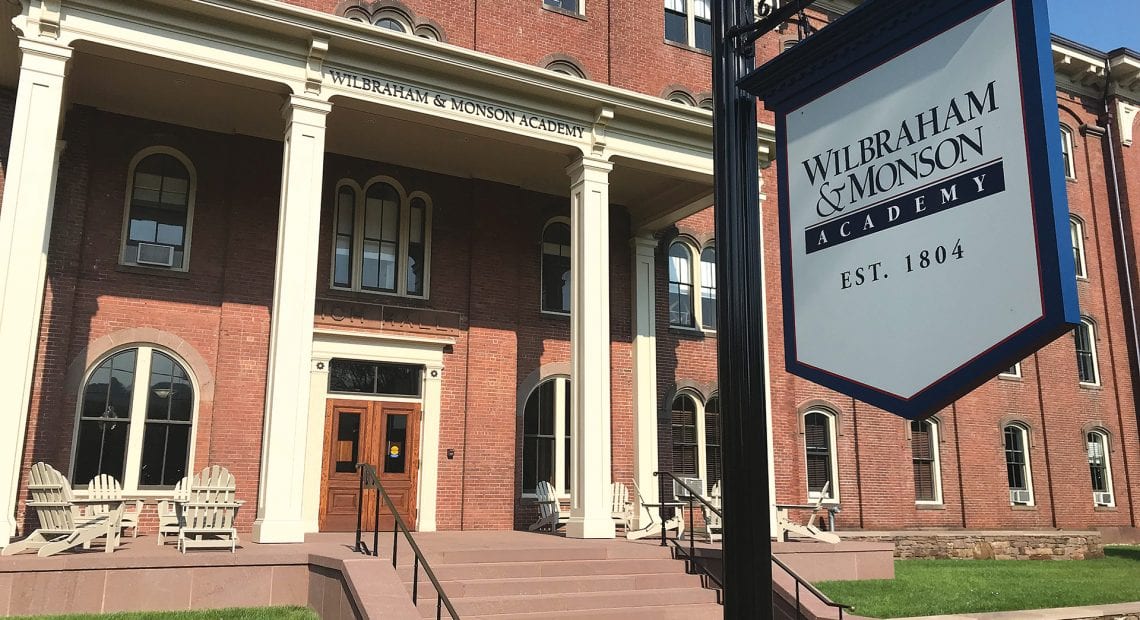


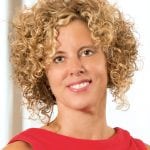


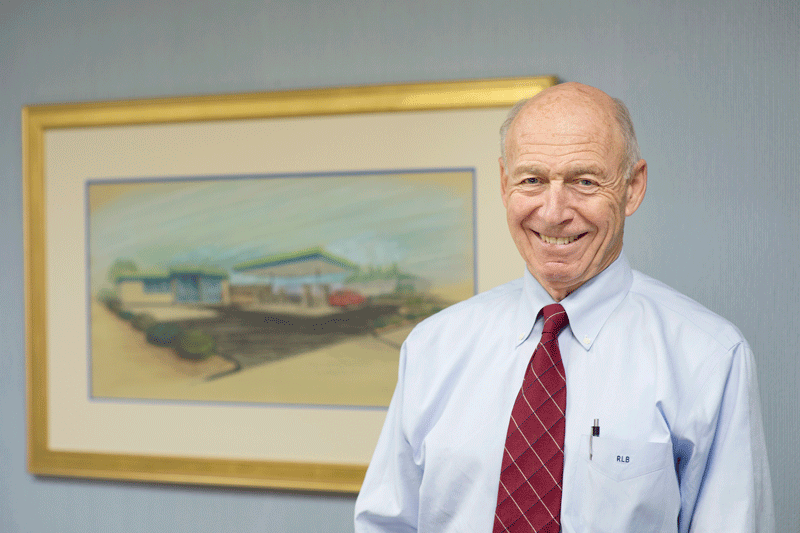


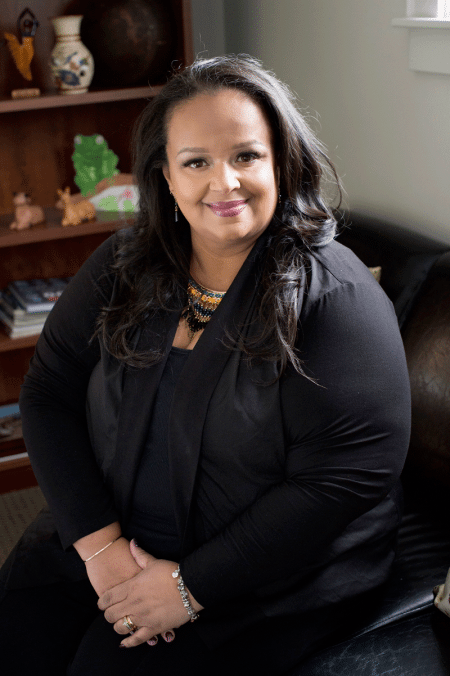




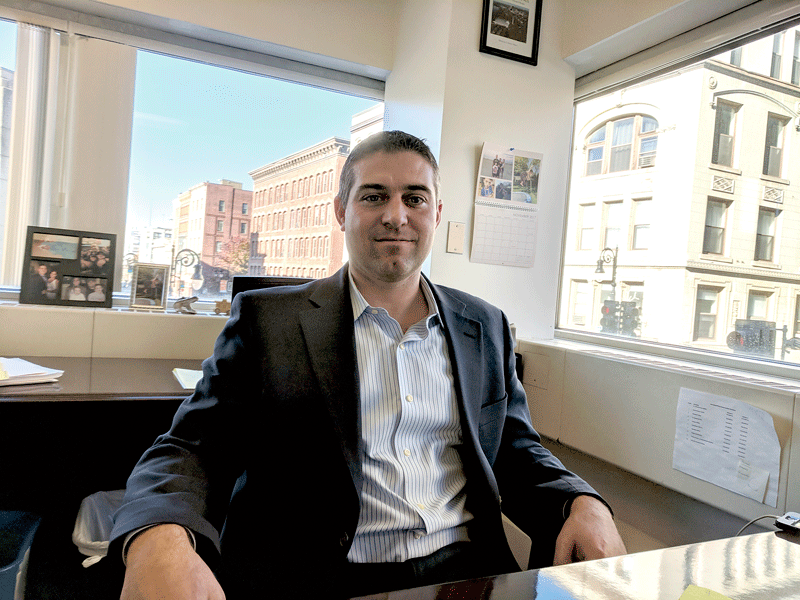

 It’s no secret that hospitals and other healthcare settings are pushing for nurses with higher education levels, but it can be difficult for a working RN, often with plenty of family responsibilities, to go back to school. The RN to BSN
It’s no secret that hospitals and other healthcare settings are pushing for nurses with higher education levels, but it can be difficult for a working RN, often with plenty of family responsibilities, to go back to school. The RN to BSN 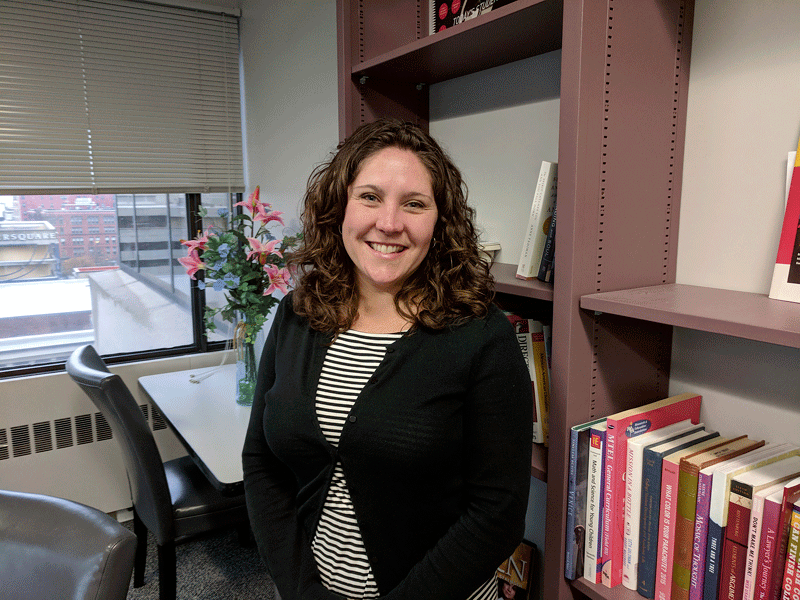
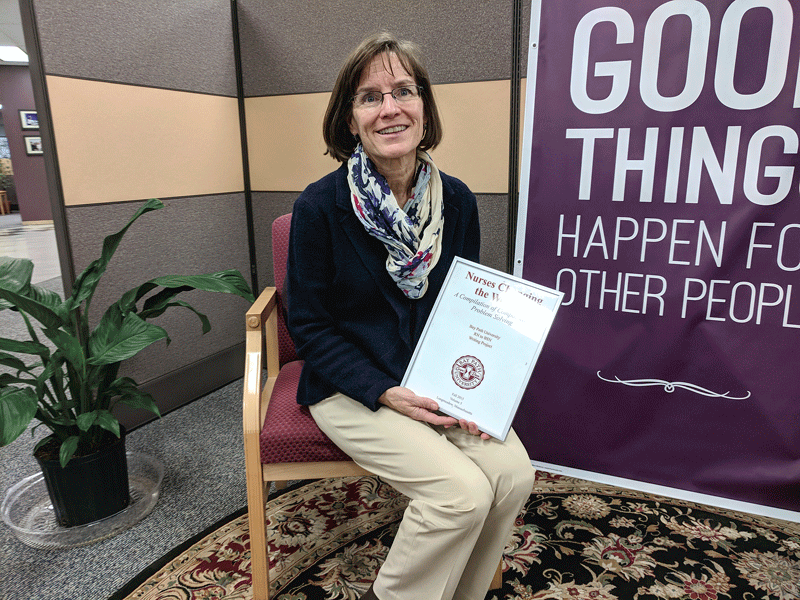

 Those managing the
Those managing the 